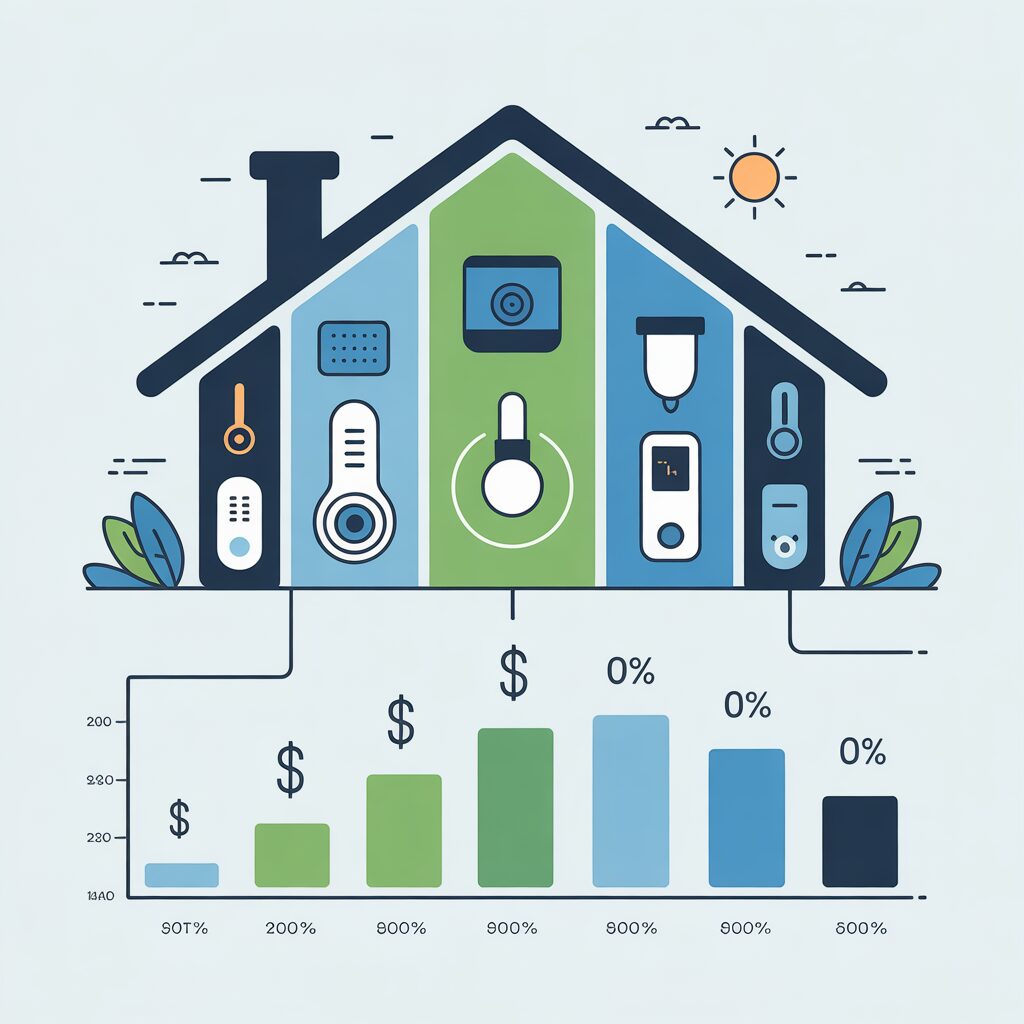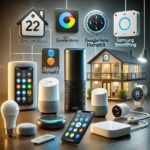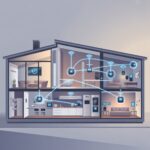💰 Budgeting for a Smart Home: Costs, ROI, and Phased Implementation
Creating a smart home is an exciting venture that promises greater convenience, efficiency, and security.1
However, the investment can range from a few hundred to tens of thousands of dollars.2
A strategic budget and a phased implementation approach are key to realizing your dream smart home without financial strain.3
Cost Considerations: Breaking Down the Investment
The total cost of a smart home depends heavily on the scope of automation, the size of your home, and whether you choose a DIY or professional installation.4
On average, homeowners spend between $2,000 and $7,000 for a moderate system, with basic setups starting much lower and whole-home custom installations easily exceeding $10,000.5
| System Type | Typical Cost Range | Typical Features |
| Basic (DIY) | $150 – $1,500 | Single device (speaker, plug, or thermostat), limited integration. |
| Mid-range | $2,000 – $6,000 | Multiple devices, basic integration (security, lighting, climate). |
| Advanced (Pro-Installed) | $2,500 – $10,000+ | Whole-home automation, custom integration of appliances and systems. |
Upfront Costs (Hardware and Installation)
Your initial investment will be dominated by the cost of devices and, if applicable, professional installation fees.
- Smart Hubs/Controllers: Ranging from $50 to $300, these are the brain of your system, enabling communication between devices.6
- Security: Video doorbells, cameras, and smart locks are popular.7 Costs vary widely: a smart lock is typically $125–$500, while a comprehensive security system can cost $700–$5,000.
- Energy Management: A smart thermostat typically costs $100–$300, and smart lighting (bulbs and switches) can range from $10 to $150 per unit.
- Installation and Infrastructure: Professional installation can be a significant cost, ranging from a few hundred to several thousand dollars.8 You may also need to budget for Wi-Fi boosters or network upgrades ($50–$150) to support the network traffic.9
Long-Term/Ongoing Costs
Don’t forget the recurring costs that ensure your system remains functional and secure:
- Subscription Services: For security monitoring ($10–$40 per month) and cloud storage for camera footage ($3–$10 per month).10
- Maintenance: Battery replacements and, rarely, professional check-ups ($75–$200 annually).
- Device Replacement: Smart devices have an estimated lifespan of 3 to 7 years, so budget for replacements over time.11
Return on Investment (ROI)
While the convenience of a smart home is priceless to many, the financial return is a crucial part of the budget. Smart home technology offers ROI through three main avenues: energy savings, reduced insurance premiums, and increased property value.12
1. Energy Savings (Fastest Payback)
- Smart Thermostats: These are one of the most effective ROI devices, saving an average of 10% to 23% on heating and cooling costs, with an initial investment often recovered within 1 to 2 years.13
- Smart Lighting: LED smart lighting systems are highly energy-efficient and can reduce lighting costs, generally paying for themselves within 2 to 3 years.14
- Overall: Properly implemented smart home systems can reduce total energy consumption by 15% to 30%, leading to annual savings of $300–$600 for the typical household.15
2. Property Value and Resale
Homes with integrated smart technology are highly desirable to modern buyers and often sell faster.16
- Value Increase: Integrated smart features can add 3% to 5% to your property’s resale value, with smart security systems often yielding the highest premium.17
- Buyer Demand: Studies show that a high percentage of buyers are willing to pay more for homes with pre-installed, high-impact smart features like security and smart thermostats.18
3. Reduced Insurance
Insurance providers often offer discounts of 5% to 10% on home insurance premiums for properties with integrated smart security, fire, and water leak detection systems.19
🧭 Phased Implementation Approach
The most effective budgeting strategy is a phased implementation.20 Instead of buying all devices at once, you spread the cost over time, focusing on high-impact areas first.21
Phase 0: Planning & Infrastructure (Initial Small Investment)
- Goals: Define your top priorities (e.g., security first, then energy saving).22
- Ecosystem: Crucially, select a primary ecosystem (e.g., Amazon Alexa, Google Home, Apple HomeKit) to ensure device compatibility.23 This avoids “vendor lock-in” and future headaches.24
- Network: Budget for a robust, stable Wi-Fi network to support all connected devices.25
Phase 1: Core Functionality (Security and Energy Efficiency)
Focus on devices that offer the fastest ROI and address core needs.
| Focus Area | Priority Devices | Typical Cost | ROI Benefit |
| Network Core | Smart Hub, Strong Wi-Fi Router/Mesh | $150 – $700 | Infrastructure for all future phases. |
| Security | Video Doorbell, Smart Lock (main door) | $200 – $700 | Peace of mind, insurance discount, property value. |
| Energy | Smart Thermostat | $100 – $300 | Reduced utility bills. |
| Convenience | Smart Speaker/Display | $50 – $200 | Central voice control. |
Phase 2: Expansion (Lighting and Additional Rooms)
Once the core is stable, expand into other high-use areas.
- Lighting: Smart bulbs and switches for main living areas and bedrooms ($200–$500+).
- Plugs/Automation: Smart plugs for appliances and lamps in secondary rooms ($10–$30 per plug).
- Advanced Security: Add interior cameras or door/window sensors.26
Phase 3: Whole-Home Integration and Luxury
These are the “nice-to-have” features that complete the automated experience.
- Smart Appliances: Refrigerator, oven, washing machine.
- Entertainment: Full home theatre integration, universal remotes.
- Advanced Climate: Smart blinds, automated curtains, smart ceiling fans.
- Lawn & Garden: Smart sprinklers, robotic lawnmowers.
By following a strategic, phased budget plan, you can enjoy the benefits of a smart home immediately while spreading the significant cost over a timeline that works for your finances.
This video provides an overview of costs and strategies for getting started with smart home automation. Budgeting for Home Automation Q&A | Episode 3









